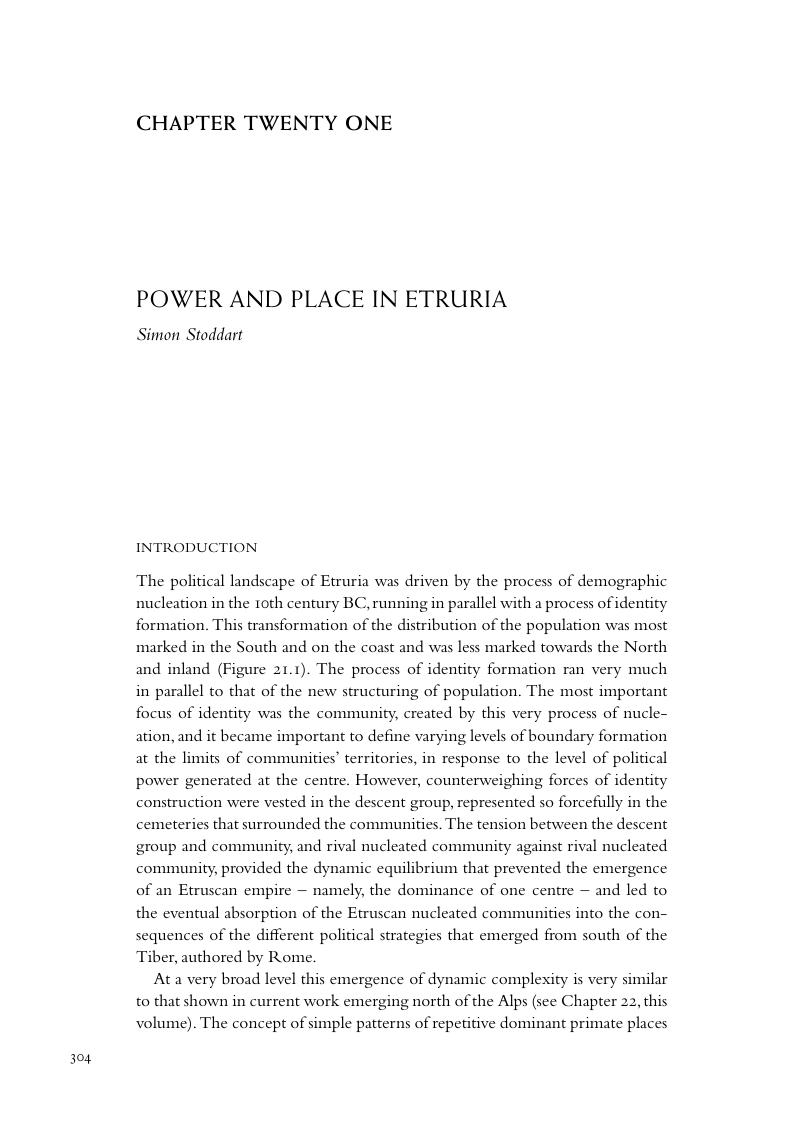Book contents
- Eurasia at the Dawn of History
- Eurasia at the Dawn of History
- Copyright page
- Contents
- Figures
- Tables
- Contributors
- Introduction
- Part I Between Myth and Logos
- Part II The Development of Social Differentiation
- Part III Approaching Social Complexity
- Part IV Urbanism through the Ages: Concepts, Models, and Definitions
- Part V Ancient Civilizations at the Turn of the Axis
- Part VI Times of Connectivity: The Mediterranean on the Move
- Part VII Early Urban Cultures from South to North
- Chapter Nineteen The Determinacy of Space and State Formation in Archaic Greece
- Chapter Twenty Intercultural Networks and Urbanization in Southern Italy in the Early Iron Age
- Chapter Twenty One Power and Place in Etruria
- Chapter Twenty Two Urbanization Processes and Cultural Change in the Early Iron Age of Central Europe
- Chapter Twenty Three Founding Rituals and Myths in the Keltiké
- Part VIII Changing Symbols, Changing Minds?
- Index
- References
Chapter Twenty One - Power and Place in Etruria
from Part VII - Early Urban Cultures from South to North
Published online by Cambridge University Press: 28 March 2017
- Eurasia at the Dawn of History
- Eurasia at the Dawn of History
- Copyright page
- Contents
- Figures
- Tables
- Contributors
- Introduction
- Part I Between Myth and Logos
- Part II The Development of Social Differentiation
- Part III Approaching Social Complexity
- Part IV Urbanism through the Ages: Concepts, Models, and Definitions
- Part V Ancient Civilizations at the Turn of the Axis
- Part VI Times of Connectivity: The Mediterranean on the Move
- Part VII Early Urban Cultures from South to North
- Chapter Nineteen The Determinacy of Space and State Formation in Archaic Greece
- Chapter Twenty Intercultural Networks and Urbanization in Southern Italy in the Early Iron Age
- Chapter Twenty One Power and Place in Etruria
- Chapter Twenty Two Urbanization Processes and Cultural Change in the Early Iron Age of Central Europe
- Chapter Twenty Three Founding Rituals and Myths in the Keltiké
- Part VIII Changing Symbols, Changing Minds?
- Index
- References
Summary

- Type
- Chapter
- Information
- Eurasia at the Dawn of HistoryUrbanization and Social Change, pp. 304 - 318Publisher: Cambridge University PressPrint publication year: 2017
References
- 5
- Cited by



